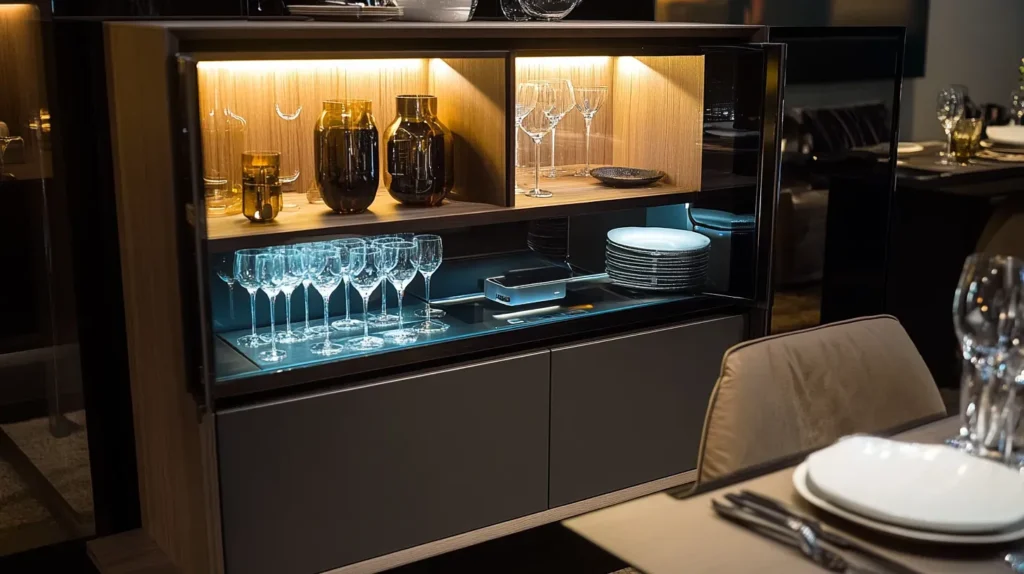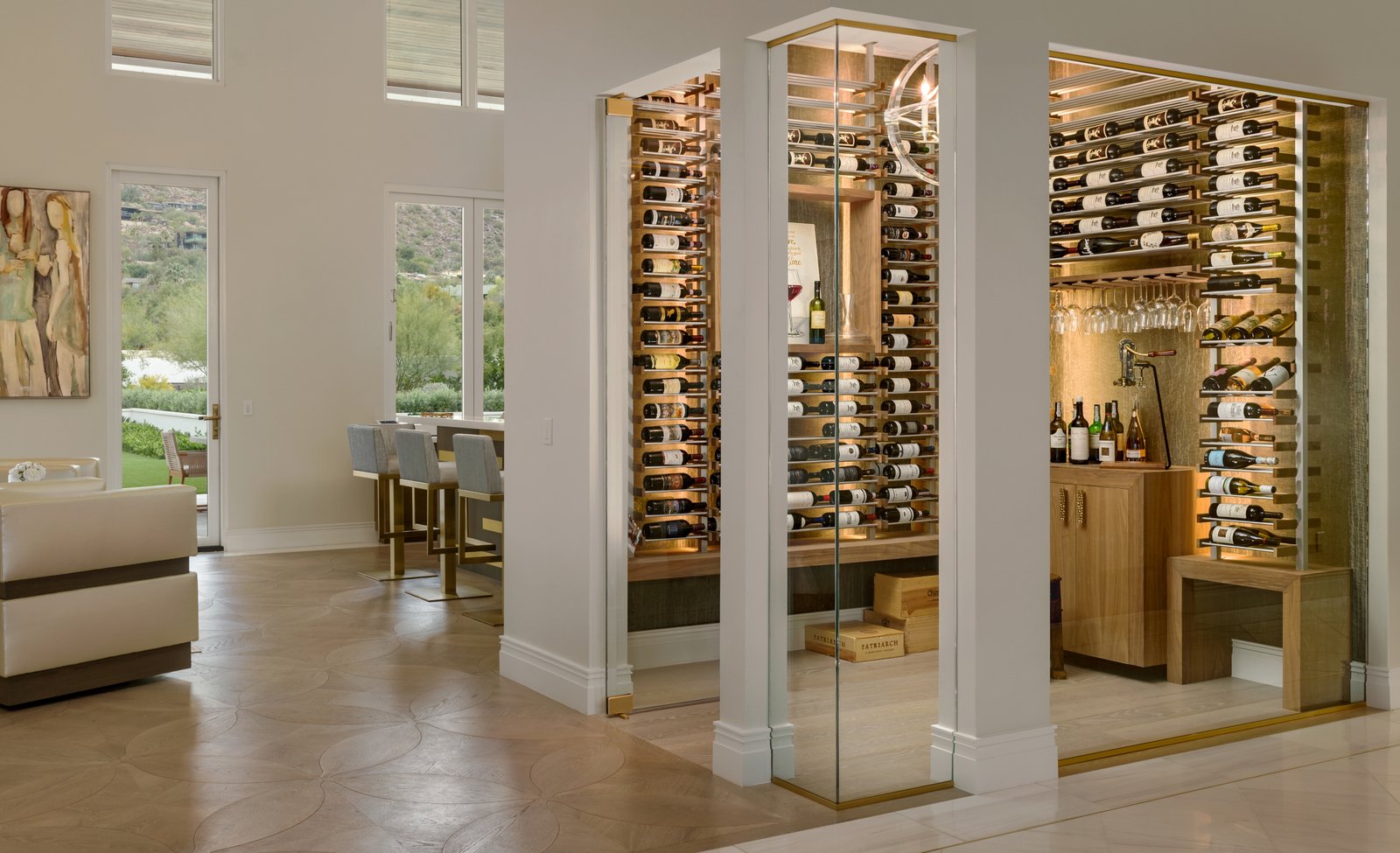A living room sideboard is a versatile piece of furniture designed primarily for storage and display. Traditionally used in dining rooms to store dinnerware, cutlery, and table linens, sideboards have evolved into multi-functional decor pieces. They now serve various purposes across different rooms. Whether in a living room as a TV stand or in a hallway as a chic storage solution, sideboards can fit seamlessly into any space.
One of the best things about sideboards is how they combine style and practicality. Want to showcase your fancy dinnerware or family photos? A sideboard can do just that while keeping clutter hidden. Whether your home has a modern, rustic, or traditional aesthetic, there’s a sideboard that can enhance your room’s look. They’re more than just storage units; they’re an essential part of making your home both functional and stylish.
Consider the Purpose of Your Sideboard
Before choosing a sideboard, think about how you plan to use it. If storage is your main goal, look for a sideboard with a good mix of open shelves and closed cabinets. Open shelves are great for showcasing items like vases or art pieces, while closed cabinets help hide clutter. Need even more organization? Drawers are perfect for keeping smaller items like napkins, cutlery, or remote controls neatly arranged.
But sideboards aren’t just about storage—they can be multi-functional. Many people use them as a stylish TV stand in their living room. Others use sideboards as room dividers to create defined spaces in open-plan layouts. The beauty of a sideboard is that it adapts to your needs, whether it’s serving as extra storage, a display piece, or even a buffet for entertaining guests.

Materials and Construction: What to Look For
When choosing a living room sideboard, the material is key. Most commonly, sideboards are made from wood, which gives a classic and durable feel. Solid wood like oak or walnut is great if you’re looking for something long-lasting. However, if you’re after a modern look, metal and glass sideboards are also popular. They offer a sleek, contemporary vibe that pairs well with minimalist decor.
Sustainability is also important. Reclaimed wood sideboards are not only eco-friendly, but they also bring a unique character with natural imperfections. If you’re thinking about environmental impact, look for options with eco-friendly finishes like water-based lacquers. These finishes reduce harmful emissions and help maintain indoor air quality. Whether you prefer a traditional wood piece or a more modern mix of materials, always think about how durable and sustainable your choice will be in the long run.
Styles and Finishes: Choosing the Right Look
When picking a sideboard, its style and finish are key factors in ensuring it complements your space. Popular styles range from modern to mid-century, rustic, and minimalist. If you want a clean, streamlined look, modern or minimalist styles with sleek lines and neutral tones might be perfect for your home. On the other hand, if you love a vintage vibe, a mid-century style sideboard with tapered legs and wood finishes can add warmth and charm to your room.
Rustic sideboards, often made from reclaimed wood, bring a cozy, farmhouse feel, while finishes like distressed wood or metal accents can enhance this look. For those who prefer a more eclectic approach, a high-gloss finish or bold colors, like deep blues or vibrant yellows, can turn your sideboard into a standout piece.
Remember to match the finish with your existing decor. Natural wood tones like oak or walnut work well in traditional or neutral spaces, while high-gloss finishes are perfect for more contemporary settings. Whether you want your sideboard to blend in or make a bold statement, choosing the right style and finish is all about balance.

Size and Proportions: How to Make the Right Fit
When choosing a sideboard, size matters—literally. First, measure the room where the sideboard will go. It needs to fit comfortably with your other furniture without crowding the space. If you’re placing it in a dining room, make sure it’s slightly taller than your dining table so it creates a balanced look. For living rooms, a lower sideboard is ideal if it will serve as a TV stand.
Always consider traffic flow. You don’t want the sideboard blocking pathways or making the room feel cramped. Make sure there’s enough space for easy access to drawers or cabinets. A good rule of thumb is to leave at least 24 inches of space around the sideboard so you can move around it easily.
For smaller rooms, consider a more compact sideboard with clean lines, which won’t overwhelm the space. If your room is larger, go for a wider or taller piece that fills the space without looking out of proportion. The right size ensures your sideboard looks natural and adds to the room’s overall design without becoming an eyesore.
Additional Features and Functions: Making the Most of Your Sideboard
When selecting a sideboard, consider extra features that can elevate its functionality. If you love hosting, a sideboard with built-in wine racks or removable trays can make serving guests a breeze. These features add a practical touch, allowing you to store and display beverages, glasses, or even hors d’oeuvres during a dinner party.
Sideboards with glass doors are perfect for those who want to show off their fine china or collectibles. Not only do they protect your items from dust, but they also add a layer of elegance to your dining or living space. For extra protection, especially in the dining room, look for a sideboard with a protective top. This feature is great for placing hot dishes or decorative items without worrying about damaging the surface.
These small but impactful details can turn your sideboard from a simple storage unit into a multi-functional centerpiece of your home. Whether it’s wine, dinnerware, or décor, these added features help you keep everything organized and easily accessible.

Budget and Quality: Striking the Perfect Balance
When buying a sideboard, it’s essential to set a realistic budget. High-quality sideboards, especially those made from solid wood like oak or walnut, can be an investment. While these pieces may cost more upfront, their durability makes them a better long-term choice. If you opt for a cheaper option, like particleboard, you may need to replace it sooner, which could end up costing more in the long run.
Craftsmanship plays a huge role in quality. Well-made sideboards feature sturdy joints, smooth drawers, and finishes that stand the test of time. Even if you’re on a tight budget, it’s worth considering brands with a reputation for delivering both quality and style. Remember, a sideboard isn’t just a storage unit; it’s a piece that can define a room’s aesthetic. So, investing in a high-quality piece ensures it not only lasts but also elevates your space.
In short, balance your budget with quality, and you’ll find a sideboard that’s both practical and visually appealing for years to come.
Maintenance and Care: Keeping Your Sideboard Looking New
Taking care of your sideboard is key to making sure it lasts and stays beautiful. For wooden sideboards, regular dusting with a soft, dry cloth will prevent dust from settling into the grain. If your sideboard has a finish, like varnish or lacquer, avoid harsh cleaners. Instead, use a mild soap diluted in water for gentle cleaning. Make sure to wipe it dry immediately to avoid any moisture damage.

Glass sideboards require regular cleaning to avoid smudges and fingerprints. A glass cleaner or a mixture of vinegar and water will do the trick. Just be sure to use a lint-free cloth for a streak-free shine. For metal details or frames, a soft cloth and a gentle cleaner specifically for metal will help maintain the shine without scratching the surface.
Always keep your sideboard out of direct sunlight to avoid fading, especially with wooden or upholstered finishes. If you have any decorative items on the surface, use felt pads underneath them to prevent scratches. Following these simple care tips will keep your sideboard looking new for years to come.
A Sideboard That Blends Function and Style
Choosing the right sideboard does more than just add extra storage—it elevates your entire space. Whether you need a place to store dinnerware, create a focal point in the living room, or simply organize your clutter, a well-designed sideboard can do it all. Its versatility makes it a must-have piece of furniture, seamlessly blending functionality with style. A sideboard not only enhances the look of your home but also makes everyday living easier by keeping everything in its place.
Looking for a fully customized sideboard? PA Home offers a one-stop solution to create the perfect piece tailored to your needs. Whether you need something modern, rustic, or minimal, their custom designs ensure that your sideboard fits both your personal style and your space perfectly. With PA Home, you’re not just buying furniture—you’re investing in a piece that reflects your taste and enhances your home.
FAQ
Look for storage versatility, such as a mix of shelves, cabinets, and drawers, as well as a design that complements your decor.
Yes, many sideboards are low and wide, making them perfect for holding TVs while providing extra storage for media accessories.
Wood is a popular option for warmth and durability, while glass or metal accents can create a modern, sleek look.




